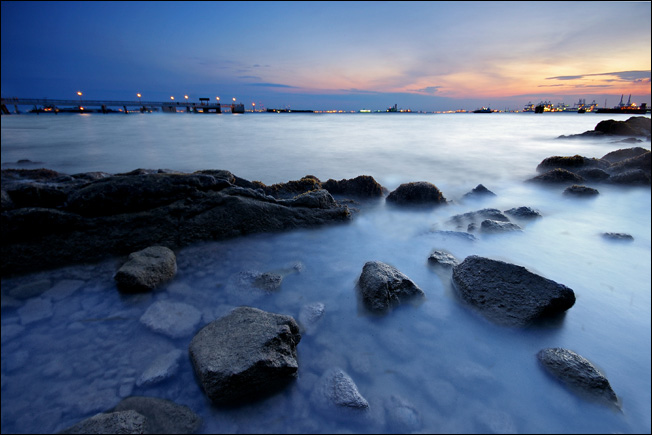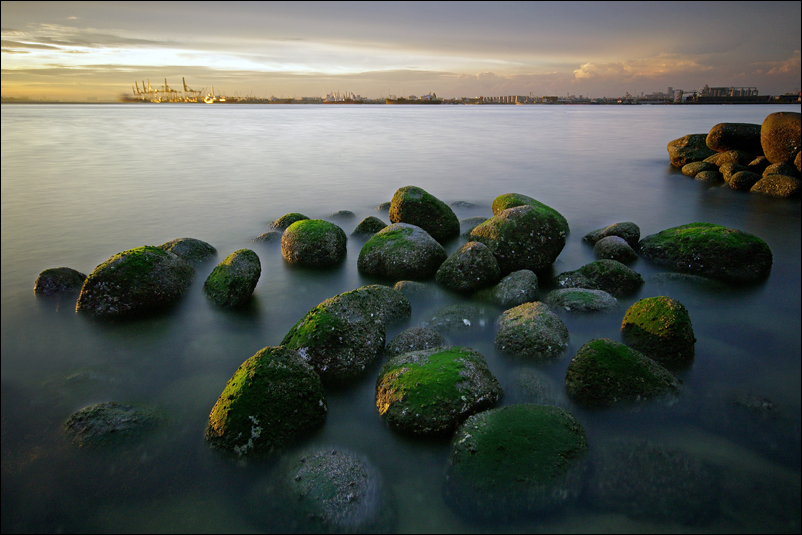Regarding filters
- Thread starter niunai
- Start date
You are using an out of date browser. It may not display this or other websites correctly.
You should upgrade or use an alternative browser.
You should upgrade or use an alternative browser.
most gnd filters are slot-in, and for a reason.hi,
jus a quick question.
are there slim GND filters in the market? i know there are slim CPL thou
so the holder is the one where the problem is, and there are "slim holders", or rather, holders designed for UWA usage, but there is no real need for the gnd filter to be slim.
Filter brands are like cars:
Continental cars are expensive and generally perform very very well. Continental cars also have higher and lower models. eg. S-class, A-class.
Continental cars: B+W, Rodenstock, Heliopan, LEE, Schneider Optics
French cars are ok and reasonably priced but sometimes performance is not the best in certain situations.
French cars: Cokin
American cars quite a few are very good, but quite a number are lemons. Some are good but just not worth the money.
American cars: Tiffen, Singh Ray
Japanese cars: very reliable, some are cheap, some are top of the line (like Lexus, Infiniti, Acura), and some of those top of the line even exceed the performance of continental cars.
Japanese cars: Nikon, Canon, Hoya, Kenko, Marumi, Tokina
China cars: very cheap, usually copies of more expensive brands, quality depends on the specific car. Some are terrible. But if you find a good one, it will be good and worth many times the low price you pay for it.
China cars: Tianya
I will stay away from any other brands not mentioned here and the ones below.
Malaysia/Singapore cars: Brands are owned/founded locally in MY or SG. Usually most of the parts are OEM by other companies. Supposed to be very cheap. Salesman always try to tell you it is very good and give you the wrong impression that it is made in Germany or Japan. And will try to sell you at a much higher rip off price. Performance is just so so. Some are totally terrible. Some are not bad.
Malaysia/Singapore Cars: Steinzeiser, Vitacon, Emolux.
haha! this is very clear to me. as i always read on cars.
now i know how to differentiate the price to be expected. LOL
Dd123. Thank you for your valueable information. Care to share what kind of filter system are u using.
I have a screw in cpl filter. Can i use it together with the slot in nd/gnd instead of using the cpl(slot in version) that is super expensive from cokin z-pro?
I have a screw in cpl filter. Can i use it together with the slot in nd/gnd instead of using the cpl(slot in version) that is super expensive from cokin z-pro?
Dd123. Thank you for your valueable information. Care to share what kind of filter system are u using.
I have a screw in cpl filter. Can i use it together with the slot in nd/gnd instead of using the cpl(slot in version) that is super expensive from cokin z-pro?
When I use CPL, I will not not be using any slot in filters.
CPL: Kenko Pro1D wideband slim CPL 72mm. Hoya CPL 58mm, Tokina CPL 52mm.
UV/Protectors: Kenko Pro1D Protectors (UV on old lenses that I sometimes use on film cameras)
Slotted holder: Lee foundation Kit, 77mm adapter ring. Step up rings 67-77, 72-77 for my different lenses.
Slotted filters: Hitech GND 0.3S(GND2) S0.6S(GND4) S0.9S(GND8). Hitech ND0.9 (ND8)
ND fitlers: B+W ND110 77mm, Hoya ND4 52mm
Others: Hoya 55mm FL-W and ND2
quite a number of my filters are from my old days...
Last edited:
Night86mare, the pictures you shown right, the water is silky look because you use long exposure, and the water is clear, did you use polarizer to minimize reflection?
sorry, which pictures?
i do not use polarizer most of the time. mainly because i do not have one, and because UWA will exhibit uneven polarisation in the sky.
no, not hdr.
you take 3 exposures, blend them manually in photoshop.
won't get the cartoonish effect that hdr always seems to add subtly.
is hard work, but can have nice results, you can see my digital blending set here, i rarely do it because it's so time consuming.
this was my first manually blended picture:

3 exposures; one for the sky, one for the water, one for the rocks.
erasing was a pain in the arse, i remember this took me nearly 4 hours.
the second time it wasn't so bad, i think 45 min

These two pictures.
Both pictures have silky water and the clear water.
Can share how you manage to do it?
These two pictures.
Both pictures have silky water and the clear water.
Can share how you manage to do it?
those didn't have nd being used during the shoot,
as i explained, for both shots i had 3 exposures:
1 for the water, 1 for the sky, 1 for the rocks.
the exposure for the water was sufficient enough to smooth it out.
those didn't have nd being used during the shoot,
as i explained, for both shots i had 3 exposures:
1 for the water, 1 for the sky, 1 for the rocks.
the exposure for the water was sufficient enough to smooth it out.
I see. Thanks thanks
most gnd filters are slot-in, and for a reason.
so the holder is the one where the problem is, and there are "slim holders", or rather, holders designed for UWA usage, but there is no real need for the gnd filter to be slim.
oh, so there's no screw GND filters? didn't know tht
i'm using for UWA so tht's y need slim ones
oh, so there's no screw GND filters? didn't know tht
i'm using for UWA so tht's y need slim ones
Not that there are no screw type GND, just that with the slot type GND, we can adjust the horizon according to the landscape.
oh, so there's no screw GND filters? didn't know tht
i'm using for UWA so tht's y need slim ones
there are screw in gnd
but i don't know why people make them
the horizon is fixed, that's just plain silly
ok, now i'm confused between GND and ND filters.
which one shld i get? i already got a CPL, i need something to block the skies so tht i can use slower shutter speed.
will be getting the tianya filters
If you want to darken part of the frame only, get GND. If you want to darken the whole frame and/or, want to get a longer exposure, get a ND.
If you want to darken part of the frame only, get GND. If you want to darken the whole frame and/or, want to get a longer exposure, get a ND.
aiyoh, like this very hard to decide leh. looks like worst come to worst buy both
aiyoh, like this very hard to decide leh. looks like worst come to worst buy both
If you do not know which to buy, it means you still don't understand how to use them. Which means you shouldn't buy at all.
If you do not know which to buy, it means you still don't understand how to use them. Which means you shouldn't buy at all.
not quite, i'm buying both since the way u described seems to explain that the filters are used for different situations. GND to use if need to block a particular area of the picture (ie sky), ND is for the whole picture. correct me if there's any miscomm.
IMHO, I don't think not knowing how to use should stop someone from buying such an item. To gain practical knowledge and understanding on such an item, one has to actually have hands-on exp.
If you do not know which to buy, it means you still don't understand how to use them. Which means you shouldn't buy at all.
Agree with DD123... If you don't understand the purpose of both ND and GND filters, then don't go into it yet.. or else get both also no use - instant white elephants.
Repeating what's been said... Neutral Filters (NDs) - just to delay the expose (so that you can get smooth water effect - blur slow moving objects (like the Singapore Flyer), the stronger the ND the longer the camera is forced to expose.
Graduated Neutral Filters (GNDs) - while looks like a sibbling of ND, really have a different purpose altogether and that is to underexpose the stronger portion of the horizon (higher intensity skies, etc) - so that the rest of the scene (not as strong) can be exposed properly...
NDs are easier to use than GNDs - as the latter have hard and soft types (depending on situations).
This can be considered spoon-feeding... if you still can't understand what I've just said or what others provided - please google for both so that you can read in greater detail with examples (some do provide image examples).
One more step to help you further, if you want a good read - go buy the issue of Landscape Photography published by Digital SLR magazine (UK based)... Should be able to find this issue at most of the known bookstores or smaller news-stands (ones that also sell tidbits/exchange money/phone card).. TK also carry this mag.
Similar threads
- Replies
- 0
- Views
- 76
- Replies
- 2
- Views
- 332
- Replies
- 0
- Views
- 139
- Replies
- 0
- Views
- 171
- Replies
- 0
- Views
- 208


